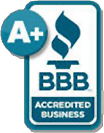Are you wasting money on Private Mortgage Insurance? Private Mortgage Insurance (PMI) protects lenders against loss if a borrower defaults. You are most likely paying for PMI if your mortgage on your home was 80% or more of the purchase price. The cost of PMI is added to your monthly mortgage payment and costs about .25% to 2% of your loan balance per year which can be a significant amount of money. However, you don’t have to pay for PMI forever. The Homeowners Protection Act of 1998, which applies to new mortgages originating on or after July 29th 1999, states three ways PMI can be canceled or terminated. Please note that the following do not apply if you are behind on any mortgage payments:
(1) Borrower Cancellation
You can send a written request to your lender if your mortgage has reached 80% of your home’s current value. This can happen in the following ways.
(a) Pay the mortgage down to 80% of the original purchase price and your home has not decreased in value.
(b) There is a sufficient increase in home value. You can cancel PMI if the increase is sufficient to reduce the mortgage to 80% or less of the current value of your home. An increase in value can be the result of home improvements or a natural rise of home prices in your area.
(2) Automatic Termination
Even if you do not request cancellation, your lender must terminate PMI when you pay down the mortgage to 78% of the original purchase price. Here, home value is based solely on the original purchase price. Thus, your lender must terminate PMI even if your home has decreased in value.
(3) Final PMI Termination
Your lender must terminate PMI when you have reached the midpoint in the repayment schedule of your loan. For example, on a typical 30 year loan, if a borrower has paid all mortgage payments through 15 years, the lender must terminate PMI. Please note that if your loan is guaranteed by the Federal Housing Administration or Department of
Veterans Affairs, these rules generally won’t apply. If you have questions about mortgage insurance on an FHA or VA loan, you should contact your servicer.






